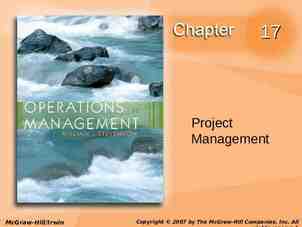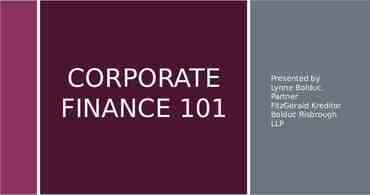Designing a Course and Preparing a Syllabus Dr. Jackie Cason
57 Slides3.02 MB
Designing a Course and Preparing a Syllabus Dr. Jackie Cason & Dr. Genie Babb Center for Advancing Faculty Excellence New Faculty Orientation Fall 2009 *Adapted from the UAF Center for Distance Education and Distance Learning Systems based on the work of Grant Wiggins & Jay McTighe, 1998, Understanding by Design and from A Self-Directed Guide to Designing Courses for Significant Learning, by L. Dee Fink, PhD, Director, Instructional Development Program University of Oklahoma.
Situational factors are important How familiar is everyone with the Blackboard course management system? How far along is everyone in developing their syllabi? What is your familiarity with the larger curriculum? Do you know where your courses fit within your department, the college, the university, your students’ educational goals?
We can begin by reflecting on our current practices of course design What ‘planning process’ do you currently use when developing a course and preparing your syllabus? Take a moment to generate a response. You can jot notes, create a diagram or flowchart, or write a descriptive paragraph. Just capture your current process!
Many begin by identifying course goals Traditional Process – Curriculum Content Guides http://www.curric.uaa.alaska.edu/curric/courses – Previous Syllabi Backward Design – Learning Goals – Feedback and Assessment – Teaching and Learning Activities
Traditional Process: Lessons and activities lead to goals Teach, Test, Hope for the Best Learning Goals Assessments & Feedback Activities and Assignments Lesson Plans, Units, Textbook Chapters
Backward Design: Lessons and activities follow from goals Teaching with the end in mind Lesson Plans Activities & Assignments Assessments & Feedback Learning Goals
Backward Design Stages of the Backward Design Process
Why “Backward”? The stages are logical, but they go against habits! We’re used to jumping to lesson and activity ideas first before clarifying learning and performance goals for our students. By thinking through feedback and assessment up front, we can better align our goals with the means, and focus our teacher-student interactions on achieving desired outcomes.
A learner-centered approach is goal-oriented Instead of beginning with a content-centered approach that covers topic X, topic Y, and topic Z, we can begin with the following question: What would I like the impact of this course to be on students, 2-3 years after the course is over? What kind of thinking or application abilities do I want them to develop through the term? In what ways do I want them to keep on learning after the course is over?” Take a moment to write a response.
Sample Learning Goals Composition Studies Communication is social and contextual and occurs at the intersection of writer, audience, and publication forum. Genres evolve, and are always evolving, as a matter of practice; therefore, the “rules” of good writing are descriptive rather than prescriptive. Citation practices in academic writing are the means of joining an ongoing intellectual conversation and a way of contributing new knowledge to that conversation. Writing styles arise out of a community’s particular ways of knowing and being.
A learner-centered approach integrates goals, assessment, and teaching/learning activities Learning Goals Teaching & Learning Activities Feedback & Assessment
Integrating Backward Design: Avoiding Disconnects Learning Goals Teaching & Learning Activities Feedback & Assessment
Integrating Backward Design: Avoiding Disconnects Learning Goals Teaching & Learning Activities Feedback & Assessment
Significant Learning Goals Significant Learning Goals Teaching & Learning Activities Feedback & Assessment
Significant learning is multidimensional, interactive, and mutually reinforcing LEARNING HOW TO LEARN CARING HUMAN DIMENSION FOUNDATIONAL KNOWLEDGE APPLICATION INTEGRATION
Feedback and Assessment Significant Learning Goals Teaching & Learning Activities Feedback & Assessment
Educative feedback and assessment strategies privilege learning over grading As students work to learn how to perform well, teachers need to provide feedback. High quality feedback will have the characteristics of “FIDeLity” feedback: Frequent: Give feedback daily, weekly, or as frequently as possible. Immediate: Get the feedback to students as soon as possible. Discriminating: Make clear what the difference is between poor, acceptable, and exceptional work. Loving: Be empathetic in the way you deliver your feedback.
Procedures for Educative Assessment Forward-looking assessment Criteria and standards Self-assessment FIDeLity feedback Activity: See worksheet on educative assessment
Audit-ive & Educative Assessment Audit-ive Assessment Backward-Looking Assessment Educative Assessment Forward-Looking Assessment Criteria & Standards Self-Assessment (by learners) “FIDeLity” Feedback (Traditional) Grading Better Learning (more authentic grading)
Teaching & Learning Activities Significant Learning Goals Teaching & Learning Activities Feedback & Assessment
Active teaching and learning are experiential and reflective Passive vs. Active Learning Passive Learning Receiving Information & Ideas Active Learning Experience Reflective Dialogue w/ Doing Self Observing Others
Active teaching and learning are experiential and reflective A holistic view of active learning: Experience Doing, Observing Actual, Simulated Rich-learning exp. Information & Ideas Reflective Dialogue Primary, secondary Reflective writing In class, out of class, online access Focused on subject or learning process
Significant Learning Learning Goals Teaching/ Learning Activities Active Learning Feedback & Assessment Educative Assessment SITUATIONAL FACTORS
Break Time
Traditional Definition of a Syllabus The Oxford English Dictionary defines syllabus as “a statement of the subjects covered by a course of instruction or by an examination, in a school, college, etc.; a programme of study” [1889].
Three Functions of a Syllabus 1. Contract 2. Communication device a. Plan of action b. Cognitive map 3. Reference guide
1. A Contract The syllabus is an important quasi-legal document that represents an agreement between you and your students (and UAA). Give students a complete syllabus the first day of class. By remaining in your class, a student consents to be governed by the syllabus.
At UAA, a syllabus is a student right “Students have the right to be informed at the beginning of each term of the 1. 2. 3. 4. nature of the course, course expectations, evaluation standards, and the grading system.” 2009-2010 Catalog, Chapter 5, p. 37
and a student responsibility “SYLLABUS AND COURSE PROCEDURES The course syllabus is the student guide to the course. Students should receive a syllabus at the beginning of each course that describes the course, policies within the course, and procedures that govern the delivery of the course. Students are responsible for obtaining the syllabus, or for having access to it electronically, and understanding the course policies in the syllabus. Any questions regarding information in the syllabus should be directed to the instructor for clarification.” 2009-2010 Catalog, Chapter 7, p. 61
The nature of the course The syllabus must reflect the purpose, content, and level of the course as stated in the Catalog. It should alert students to controversial content.*
*When using “controversial” material, please note the rights and responsibilities of Academic Freedom As a faculty member, it is your right to use any material, even if it is controversial, if you deem it germane to the subject being studied. It is your responsibility to warn students about controversial material at the beginning, so that they can make an informed choice as to whether to stay in the course.
Examples of ways to alert students to material that might be offensive. “The texts studied in this course are intended for adults and may include some disturbing language or situations.” “The writings of the past are filled with ideas, images, and words that contemporary readers may find offensive.”
Course expectations List all required textbooks and course materials. Indicate all required assignments and tests. Provide a calendar for the whole semester. Give your contact information (2 ways to contact you, office location, office hours).*
*It helps to clarify your boundaries as a faculty member by indicating non-academic resources on campus. Your role is to teach your subject—don’t try to be all things to all students! List student services that are available for nonacademic needs, such as – – – – Disability Support Services Information Technology Call Center Enrollment Services Counseling
Course expectations, cont. State policies explicitly & precisely.* – – – – Attendance & participation Late work Make-up exams Incompletes
*Course policies must be stated explicitly to be enforceable. Interpret the following policy statement: “Papers must submitted in class on the day they are due; no late papers will be accepted.”
Course expectations, cont. Set standards for proper classroom etiquette or online netiquette.
*If a student behaves disruptively, he or she can be sanctioned based on the Student Code of Conduct in the UAA Catalog. Disruptive behavior: “Conduct that unreasonably interferes with the learning environment or that violates the rights of others . . .” 2009-2010 Catalog, Chapter 5, p. 37
Making classroom etiquette explicit in the syllabus can help foster a positive learning environment. Sample language “Class discussion should be governed by appropriate behavior that exhibits respect for the individual contributions of students and professor, as well as for the learning process itself. Optimal learning can occur only within an atmosphere of collegiality and trust; any behavior which disrespects others or disrupts the learning process will not be tolerated.”
Disruptive behavior includes, but is not limited to, the following (adapted from the Institute for Teaching and Learning website at CSU http://tilt.colostate.edu/mti/tips/tip.cfm?tipid 44 ): Arriving late and leaving early Chit-chat (verbal or written) during lecture or other meaningful classroom dialogue Ringing cell phones and cell phone conversations during class Interruptive questioning during classroom presentations Classroom discussions hijacked and monopolized by one student
Disruptive behavior includes, but is not limited to, the following (adapted from the Institute for Teaching and Learning website at CSU http://tilt.colostate.edu/mti/tips/tip.cfm?tipid 44 ): Disrespecting other student viewpoints Ridiculing the instructor's presentation Sleeping in class, reading newspapers, nonclass related laptop use Harassment (“hostile” or “offensive” words and/or behavior) directed toward other students or the professor during class or outside class (creating a hostile “learning, living, or working environment”). (See 20092010 Catalog, Chapter 5, p. 37-38)
Course expectations, cont. Remind students of the standard of academic integrity.
*If a student behaves unethically, he or she can be sanctioned based on the Student Code of Conduct in the UAA Catalog. It doesn’t hurt to remind students of the standards of academic honesty and integrity in the syllabus: Some students don’t understand what plagiarism is (or will claim they don’t understand), so it’s good to spell it out. You put your students on notice that you won’t tolerate academic dishonesty. Your department may have a standard statement that you can use.
Evaluation standards/methods Types of tests Types of papers Group work Field trips Grading on the curve
Grading system Indicate all assignments that will be graded. Indicate what individual assignments are worth. Specify “hidden” points or deductions (for lateness, extra credit, etc.). Specify the grading scale. (for example 90%100% A, 80%-89% B, etc.)
Ensure that your grading system makes sense and adds up. Interpret the following grading scale: Attendance A in the class 1-3 absences B in the class 4-6 absences C in the class 7-9 absences D in the class 10-12 absences F in the class – more than 12 absences Paper #1 250 points Paper #2 250 points Paper #3 500 points Total points possible 1000
A few more generally applicable words of advice . Assignments and policies should be realistic. Policies should be worth the trouble to enforce. Policies and grading should give room for (fairly) exercising your discretion in unexpected situations.
Evaluate the following attendance and grading policy: “If you are 15-29 minutes late, you will receive half of the attendance grade for the day. If you are more than 30 minutes late, you will receive no credit for attendance for the day.”
Three Functions of a Syllabus 1. Contract 2. Communication device a. Plan of action b. Cognitive map 3. Reference guide
2. A Communication Device The syllabus provides the opportunity to anticipate and respond to student questions and to establish a tone for the course.
a. Plan of action The syllabus should represent the overall plan of action for the semester – Course mission http://curric.uaa.alaska.edu/ curric/courses/ – Educational philosophy – Course strategy – Course goals – Course calendar
A calendar should be more than dates and topics Organization of Course, BLAH 300: “Something I Gotta Take to Graduate” Week 1: Overview of Course Week 2: From Compasses to GPS Technology Week 3: Equipment Week 4: Encountering wildlife Week 5: Bird-watching Week 7: Fur Rendezvous Week 7: Iditarod Week 8: How to Cure a Hangover and Prevent Pregnancy Week 9: Cabin Fever and S.A.D.
b. Cognitive map Because students need to engage actively in creating their own cognitive maps, you can facilitate active learning by modeling the mapping process.
Three Functions of a Syllabus 1. Contract 2. Communication device a. Plan of action b. Cognitive map 3. Reference guide
3. Reference guide The syllabus is a reference for your colleagues The syllabus is a reference for you
Keep a copy of every syllabus for your records Hard or electronic copy For Annual Activity Reports For Review Files For reference when you teach the course again Course designation easy identification
Rolling with the Punches Expect to make mistakes —the perfect syllabus is If you have to make a an ideal to strive for. major change in midsemester, go about it in the appropriate way. When students misread your syllabus, give them the benefit of the doubt. Be aware of the process and timeline for Choose your battles, student grievances. always keeping your overall goals in mind.






























































